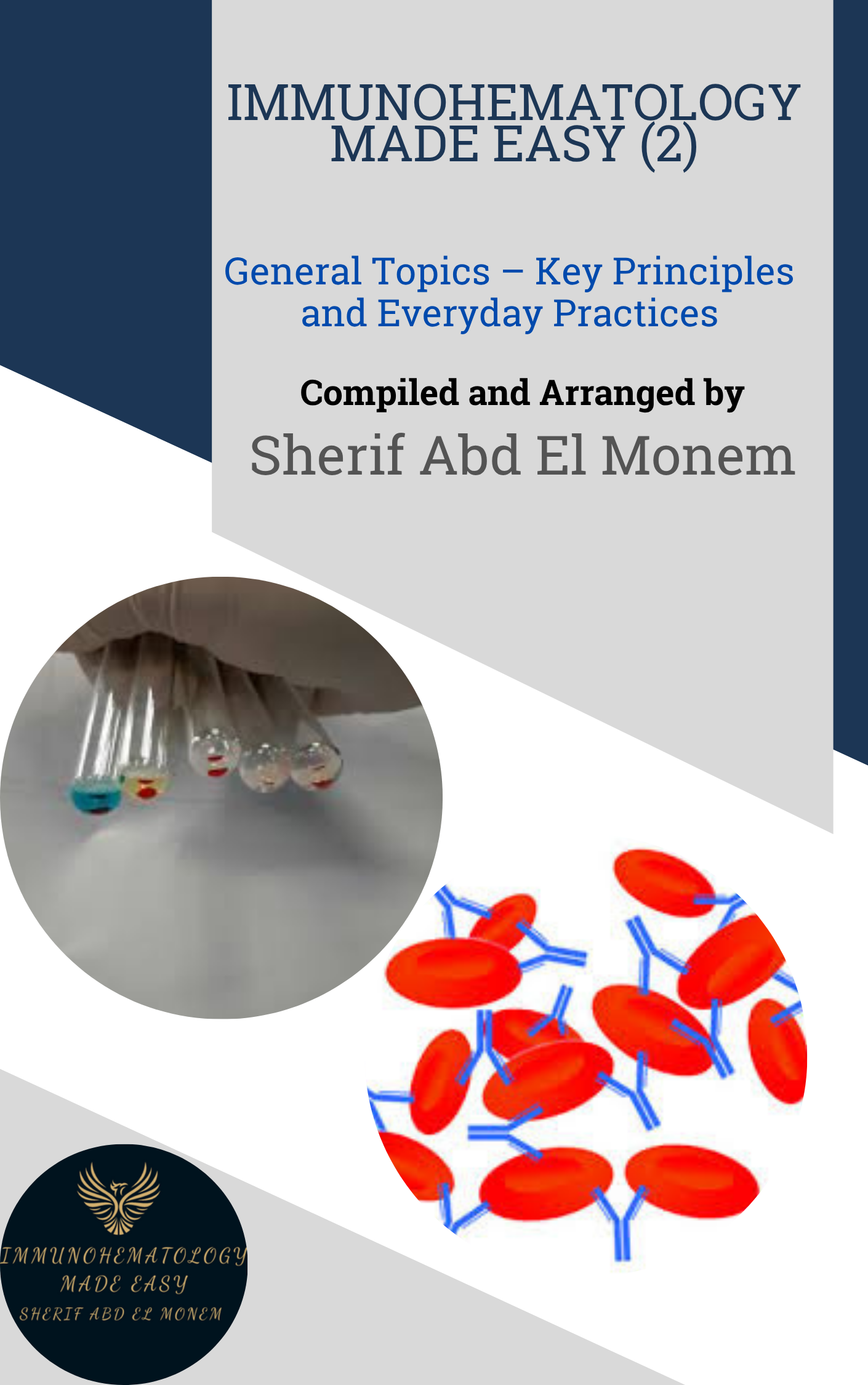Equipment and Case Review 16 - ASCP LQMS Course
Week 8 – Recorded session
Introduction:
Learn how to effectively manage laboratory equipment for accurate results. This article covers key aspects of equipment management, including installation, maintenance, documentation, and records. By implementing proper procedures, laboratories can enhance their quality systems, reduce costs, minimize downtime, and improve performance.
Factors to Consider:
Consider equipment selection, installation requirements, calibration, maintenance procedures, troubleshooting, and service accessibility when purchasing equipment. These factors are crucial for developing an effective equipment management program.
Oversight and Responsibilities:
The laboratory director oversees the equipment management program, ensuring proper training and monitoring activities. Each operator is responsible for day-to-day maintenance tasks.

Immunohematology Made Easy (2)
General Topics – Key Principles and Everyday Practices
📘 Available now in PDF & EPUB formats
🔗 Visit Store
Benefits of Equipment Management:
Implementing a robust program offers benefits such as maintaining high performance, reducing result variation, improving accuracy, lowering repair costs, extending instrument life, increasing safety, and enhancing customer satisfaction.
Selecting the Best Equipment:
Evaluate intended use, performance characteristics, facility requirements, cost, ease of operation, and safety when selecting equipment. Involve laboratory management and consider specific needs.
Acquiring Equipment:
Consider purchase, rental, or leasing options. Negotiate pricing, support inclusion, and meet physical requirements. Thorough planning and clear communication are essential.
Equipment Installation for Donated Equipment:
Follow similar installation steps as with purchased instruments. Conduct thorough function checks for proper functioning.
Importance of Equipment Documents and Records:
Maintain maintenance documents for major equipment and logbooks for smaller equipment. Include instructions, calibration guidelines, troubleshooting procedures, and maintenance records.
Using Equipment Logs as Learning Tools:
Detailed records of maintenance and corrective actions serve as valuable learning tools, reducing downtime and aiding problem resolution.
Effective Equipment Management Program:
Establish a well-organized program covering equipment selection, maintenance, troubleshooting, and repair procedures. Emphasize comprehensive documents and records for improved performance and worker safety.
Addressing Challenges with Donated Equipment:
Proactively consider feasibility, installation, spare parts, and reagents. Be prepared for instances where requirements cannot be met.
In-house Calibration and Monitoring:
Perform cost-effective in-house calibration using manufacturer-provided or in-house calibrators. Consult with the manufacturer for specific calibration needs.
Marking Malfunctioned Equipment as Obsolete:
Document and communicate equipment retirement when repairs are no longer feasible or cost-effective.
In conclusion, proper equipment management is crucial for accurate laboratory results. Consider factors, establish effective programs, maintain thorough documentation, and address challenges to enhance performance and efficiency.
.

Immunohematology Made Easy (2)
General Topics – Key Principles and Everyday Practices
📘 Available now in PDF & EPUB formats
🔗 Visit Store

📘 New to Blood Bank?
Start your 5-day journey with Immunohematology Made Easy — a simple, beginner-friendly guide with real-life examples!
👉 Get Your Copy Now